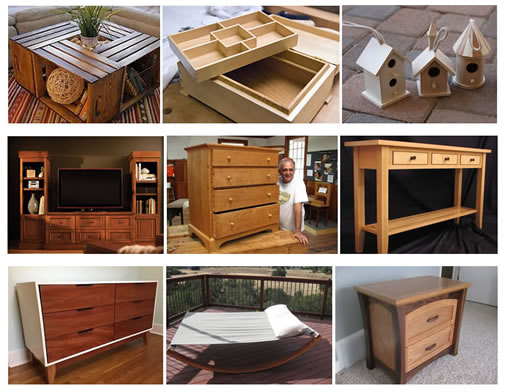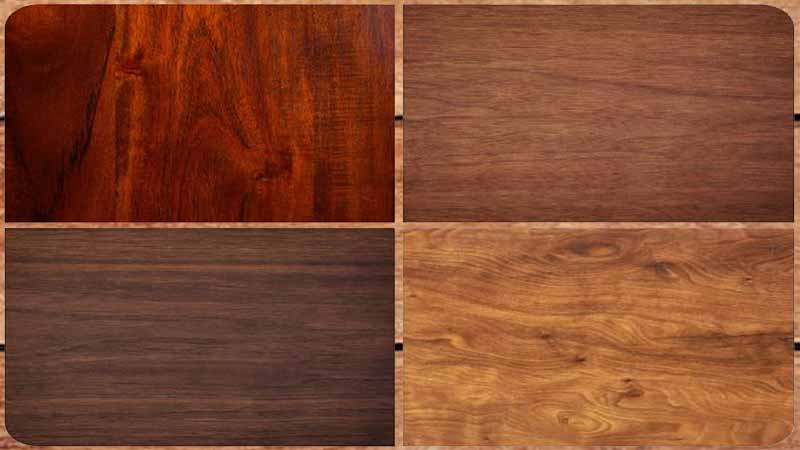When it comes down to nature, selecting the best wood for outdoor furniture is crucial for ensuring both durability and aesthetic appeal. Outdoor elements can be harsh, so opting for the best wood suited for these conditions will result in furniture that withstands the test of time.
This guide will equip you with the knowledge to navigate the often-daunting world of outdoor wood, ensuring your furniture weathers the elements in style.
Before we get deeper into the guide, below is a quick summary that outlines the best wood types for the outdoors.
Comparison Table: Best Wood for Outdoor Furniture
| Wood Type | Weather Resistance | Durability |
|---|---|---|
| Teak | High | High |
| Ipe | High | High |
| Redwood | High | Moderate |
| Cedar | Moderate | Moderate |
| Cypress | Moderate | Moderate |
| Mahogany | Moderate | Moderate |
| Pine | Fair | Fair |
Factors to Consider When Choosing Wood for Outdoor Furniture
Weather Resistance
Outdoor furniture is constantly exposed to various weather conditions, so it’s essential to consider a wood’s resistance to moisture, rain, and the sun’s intense UV rays.
Durability
You should also consider the wood’s resistance to decay and insects. Choosing wood that naturally repels these elements is crucial to ensuring longer lifespans for your furniture.
Here’s where hardwoods like teak, ipe, and mahogany step into the spotlight. These robust players boast natural oils and density, standing firm against the sun, rain, and even pesky insects.
Maintenance Requirements
Consider the maintenance needs of the chosen wood. Some woods may require regular sealing or finishing to maintain their appearance and structural integrity.
With that out of the way below is a walkthrough of the different types of woods and how they would perform outdoors. We are going to split this list into two categories, hardwoods and softwoods.
Hard Woods Suitable for Outdoor Furniture
Teak
Teak renowned for its natural oils is highly resistant to moisture and rot-proof, requiring minimal maintenance. It weathers to a charming silver-gray patina, adding a touch of rustic elegance to your space. Its durability and longevity make it a popular choice for outdoor furniture. Regular cleaning and occasional sealing can help maintain its appearance.
Ipe
This South American hardwood is a force to be reckoned with. Incredibly strong and dense, it repels moisture, insects, and decay with unwavering resilience. While low-maintenance, its price tag can be steeper than its competitors.
Mahogany
Combining beauty and brawn, mahogany offers excellent weather resistance. However, regular maintenance with sealants is crucial to shield it from the elements.
Soft Woods Suitable for Outdoor Furniture
Cedar
Cedar’s natural resistance to decay and insects, combined with its lightweight, make it a practical choice. While it weathers to a beautiful silver-gray over time it can be prone to warping if not properly cared for. Some may appreciate this characteristic, and sealing can be applied for color retention.
Redwood
This Californian native thrives in various weather conditions. Redwood boasts natural resistance to decay. Considered a sustainable option, redwood is both durable and visually appealing. Proper maintenance involves periodic sealing to enhance its longevity.
Cypress:
Similar to cedar in properties and appearance, cypress is less readily available but a charming alternative.
Other factors to consider
Durability isn’t the only factor to ponder. Consider these elements for a harmonious outdoor experience:
- Appearance: Does the wood complement your outdoor aesthetic? Teak’s silver patina might suit a rustic vibe, while mahogany’s warmth could elevate a more formal setting.
- Sustainability: Opt for wood from sustainably managed forests to ensure your furniture doesn’t come at the cost of environmental harm.
- Maintenance: Weigh your commitment to upkeep. While teak is low-maintenance, cedar might require more frequent sealing to prevent warping.
- Budget: Hardwoods generally reign supreme in durability, but their price tag reflects that. Softwoods offer a more budget-friendly entry point but may require more care in the long run.
Conclusion
Remember, the “best” wood is ultimately the one that best suits your needs and preferences. Consider your budget, desired level of maintenance, and aesthetic vision to make an informed choice. With the right wood by your side, your outdoor haven will be ready to embrace sunshine, laughter, and memories for years to come.
Bonus Tip: For an extra layer of protection, consider treating wood for outdoor use with a sealant or stain specifically designed for outdoor use. Regularly cleaning and maintaining your furniture will also extend its lifespan significantly.

John Brown
John Brown brings a wealth of experience and passion for DIY, Home and Garden, and Woodworking. With a dedication to empowering enthusiasts, he shares insights, tips, and comprehensive guides to help you transform spaces and master woodworking skills.


